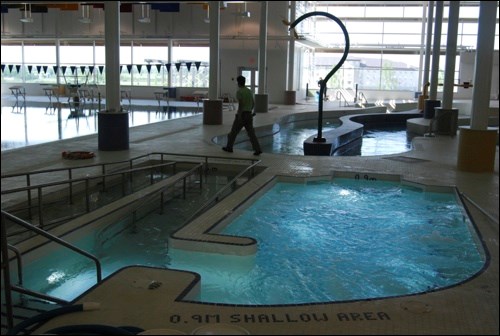City administration plans to fast track the finishing touches of the Credit Union CUplex grounds.
"We have a plan to complete the CUplex paving over two years instead of three or four," said Bill Samborski, parks and recreation director, at Monday's meeting of council and administration to discuss items in the 2014 budget.
"This could very well be a $20,000 savings on inflation alone by shrinking the term of doing it."
The inflation rate for paving is at about seven per cent per year, he added.
Originally, said Samborski, the plan had been to stretch the curbing and paving of the area behind the CUplex over three or four years. But, he said, this is one of those items that the longer it is delayed, the more money it costs.
"We feel that $175,000 will come close to completing the curbing and $150,000 a very good start at paving."
Paving the area behind the CUplex will take some of the stress off the main parking lot, said Samborski, and it will assist in the runoff of water.
Paving the area will be a way of protecting the City's assets, he said. Also, he said, if people are going to be encouraged to use the back to park, paving will make it safer for them to walk there and better to drive on.
In the area behind the field house, he would also like to see curb wrapping for easier accessibility.
There is also a plan to see ice on the Rotary Plaza next year. It won't be for playing hockey, he noted, it will be for family use.
"It's exciting," he said.
Council also looked at budget items for the Co-op Aquatic Centre. More than $300,000 has been budgeted for work to resolve ongoing issues with the roof and the heaters there.
Samborski said the department also felt it necessary to budget for other building items not necessarily related to the roof or heaters, such as anti-slip material, and some kind of railing around the lazy river.
There's a steep ledge there, he said, and it's easy to step off.
"People have done that," said Samborski.
He also said the department would be looking at ways to save on utilities in all facilities. Some facilities are at the edge of overpricing, he said, and the only way they can keep them in line is by reducing operation costs.
He said they were disappointed with the utility bills this year, after undertaking a number of supposedly energy-saving projects.
At the aquatic centre, the heaters on the roof were not working the way they were supposed to, and both pools had to be drained for maintenance.
It cost money to heat the new water that went into the pools, and some programming was lost. That cost money on the revenue side, he pointed out.
In the future, they would hope to not have to drain both pools in the same year, but to alternate them over two years.




